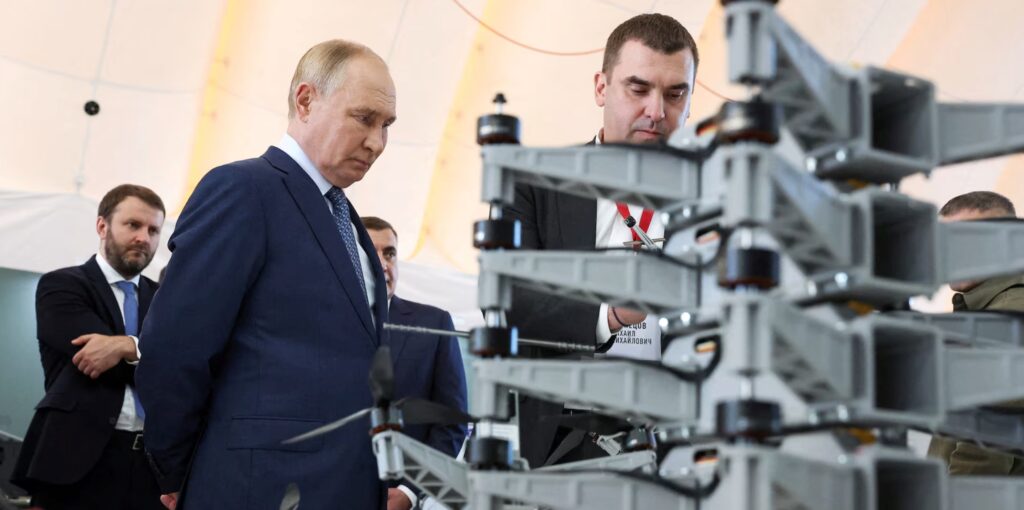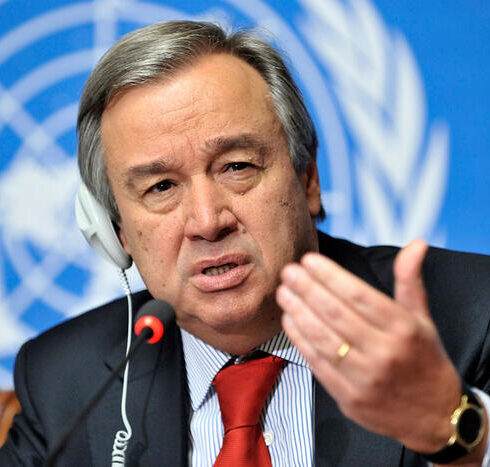Away From the Battlefield: The Agony of African Women in Russia’s Illicit Drone Manufacturing Program

Russian President Vladimir Putin inspects a drone and munitions factory on the outskirts of Moscow. Credit:Reuters
A deeply troubling new report has recently been uncovered about how young African ladies are being lured to Russia under the guise of work-and-study programmes, only to find themselves working in military drone production under harsh and exploitative conditions. They are recruited with shiny promises of a career in STEM or hospitality only to be subjected to hard labor making weapons of mass destruction and the worst part is they can’t even leave.
In the cold shadows of the Russia Ukraine war and with the ever growing demand for military artillery, at the center of diplomatic dialogues and far away from the frontlines and away from international headlines, a new form of warfare is unfolding. One not waged with missiles or guns, but with human labor. At the heart of it are vulnerable African women lured with shiny promises of a career in STEM or hospitality, their trips to Russia fully funded with no signs they are being trafficked and coerced into working in drone manufacturing plants that serve Russia’s war machinery.
The investigation, conducted by the Global Initiative Against Transnational Organised Crime, focuses on recruitment linked to the Alabuga Special Economic Zone (SEZ) in Tatarstan. While the programme has been in operation since at least 2023, it has only now started drawing international scrutiny.
Recruitment efforts appear to target women between the ages of 18 and 22, primarily through online channels. Social media campaigns and influencers advertise opportunities to study and work in Russia. Promotional materials often feature young women in school uniforms, reinforcing the illusion of an academic experience.
They’re told they’ll be doing basic factory work, catering, or cleaning but on arrival in Russia, the reality stares them right in the face. What they’re not told is that the factory work involves assembling drones used by the Russian military in the ongoing conflict against Ukraine.
Recruitment efforts appear to target women between the ages of 18 and 22, primarily through online channels. Social media campaigns and influencers advertise opportunities to study and work in Russia. Promotional materials often feature young women in school uniforms, reinforcing the illusion of an academic experience.
But the reality is far from it. According to testimonies collected from former participants and local students at the adjacent Alabuga Politekh College, conditions inside the facility are deeply exploitative. Workers report long hours, exposure to harmful chemicals, racial discrimination, and constant surveillance. Some say they were not even informed of the nature of their tasks until after arriving on site.
Although the Alabuga SEZ is run by a private company, it is owned by a government department in the Russian republic of Tatarstan. The report also notes that the programme has expanded its recruitment beyond Africa to Latin America and parts of South and Southeast Asia, including Sri Lanka and Bangladesh.
These women, desperate for opportunity, are unwittingly drawn into an illicit network that funnels them into clandestine factories, where their hands, under duress, assemble the very drones fueling a devastating conflict. Recruiters preying on economic hardship and lack of opportunity in various African countries paint vivid pictures of well-paying jobs, legal residency, and a chance to escape poverty. Relocating to Europe has never been easier, just completing a computer game and a 100-word Russian vocabulary test can get you there. Roles in factories, agricultural sectors or domestic work are advertised to lure women seeking a lifeline, “the social media ads promised the young African women a free plane ticket, money and a faraway adventure in Europe.
The ladies upon arrival have been turned into hard laborers with low wages. They find themselves living in dormitories, their passports confiscated, facing language barrier and racism, working long hours under surveillance and heavy supervision, assembling drone parts, soldering circuits, and handling hazardous materials without protection, pay, or proper training.
In the first half of 2024, 182 women were recruited, largely from Central and East African countries, officials even held recruiting events in Uganda, Kenya and Tanzania and tried to recruit from its orphanages, according to messages on Alabuga’s Telegram channel. Russian officials have also visited more than 26 embassies in Moscow to push the program. Due to employee shortage, the factory also sells the Women in STEM dream to students of Alabuga Polytechnic, a school attended by Russians aged 16–18 and Central Asians aged 18–22.
Further investigative reports reveal that some individuals, as young as 15, have voiced concerns regarding inadequate working conditions. The program is promoted to the students as a drone making specialist program but little did they know they will be making drones under harsh working conditions for meagre pay with huge health implications.
The implications of this modern day slavery extends far “beyond the battlefield.” These women, often unknowingly, have become entangled in the mechanics of conflict, their forced labour directly contributing to the manufacture of weapons used in hostilities. They are not combatants, yet their exploitation serves the war machine, blurring the lines of culpability and victimhood in a deeply disturbing way. Their suffering is not collateral damage but a direct byproduct of a global system that undervalues female labour and fails to protect the most vulnerable. This raises uncomfortable questions about the ethical responsibilities of states and corporations implicated, directly or indirectly, in such supply chains.
The plight of these African women in Russia’s illicit drone manufacturing is a stark illustration of how systemic inequalities can be weaponized. This is not just human trafficking and forced labor but a profound human rights crisis, a glaring testament to intersecting vulnerabilities; It is a violation of international law and a gendered crime. Their silent suffering demands not just empathy but determined coordinated action. We must remember that wars are not only fought with bombs they are fought with bodies. And in this war, African women’s bodies are both battlefield and weapon.






